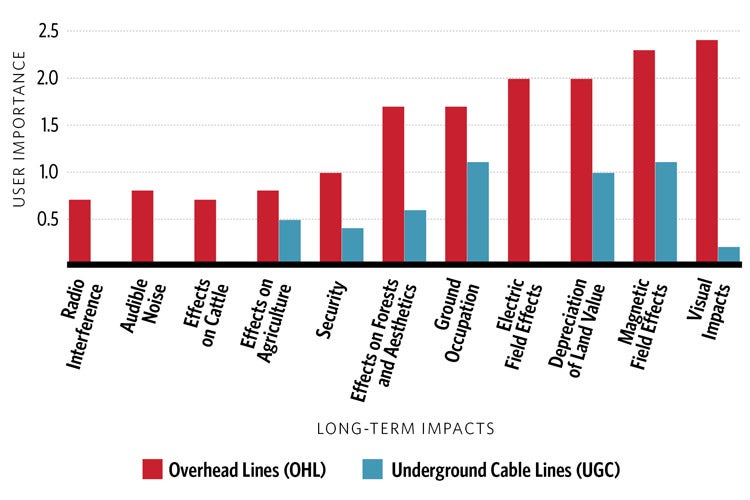Top 5 Reasons to Use Underground Transmission Lines
Underground transmission is gaining popularity for good reason. If your community supports a power system that’s safe, reliable and cost effective — all while looking good — it’s worth looking into.
No, it’s not perfect. When a repair is needed it’s quicker to hop in a bucket truck to fix a transmission line. But underground transmission is also much less likely to need a repair because it’s buried beneath the ground, well away from the elements.
Its out-of-sight location brings multiple benefits. Let’s dig into five of them.
1. Lower cost & simplified siting process in urban locales
Siting transmission projects in urban, metropolitan areas can be challenging — overhead line requires land acquisition in the right-of-way for support structures like towers, poles and overhead conductors. Land acquisition comes with inherent challenges like removal of structures for electrical clearances in the line’s path, and often, a large price tag.
Enter underground transmission. Underground lines can be installed in dedicated public thoroughfares with dense population, and don’t require right-of-way acquisition. Since land acquisition can be a major cost for transmission projects, underground lines are often more economical.
2. Minimal impact to the surrounding visual environment
Underground transmission preserves natural beauty and land value. The lines are out of sight, which answers one of the main concerns for overhead lines–aesthetic impact. While impacts vary per location, by nature overhead lines permanently alter the look of residential neighborhoods, scenic areas and historical sites.
While aesthetic impact isn’t the only transmission line concern, it tops the list of long-term impacts that can’t be mitigated. The International Council on Large Electrical Systems, or CIGRÉ, compared the impacts of greatest environmental concern for overhead lines (OHL) and underground cable lines (UGC) in its technical brochure 110.

3. System hardiness & reliability
Cable systems constructed underground have minimal impact from atmospheric conditions, with the exception of end points where cables and terminations are exposed on poles, substations and compounds. At a time where system reliability is top-of-mind for most utilities, underground transmission is a dependable solution.
Underground lines survive in the face of extreme conditions including:
- Atmospheric conditions including hurricanes, typhoons, tornadoes, wind and ice storms
- Human activities like vandalism and terrorism
- Natural disasters including landslides, floods, and in some cases, even seismic activity
4. Safety
Burying transmission lines is inherently safe. Underground cables are insulated, electrically shielded, and out of the way. Outside of the limited points where cable accessories like terminations are exposed at poles, terminal towers and substations, underground transmission poses very little risk:
- No electrocution hazard for people or wildlife
- No collision or entanglement hazards for small planes or helicopters
- No risk of line exposure from traffic collisions
- No fire risk to people, wildlife, nature or homes from arching lines during windy conditions
Underground transmission is safely out of reach.
5. Public Support
Stakeholders from the community, including residents, businesses, land owners and environmental groups rally behind underground transmission because it minimizes impacts to the community, while reliably delivering power. In Chino Hills, California, Southern California Edison is building out a 500 kilovolt underground line backed by the community after opposition to an overhead line was voiced, spurring a ruling for underground transmission by the California Public Utility Commission.
The bottom line?
Underground transmission answers many of the requirements stakeholders have come to expect.



